9 Massage Therapy Myths Debunked
Body massage therapy is considered one of the oldest healthcare practices. The treatment has various benefits for the body and the mind. Unfortunately, a number of myths surrounding massage therapy have surfaced.
To ensure that the public understands the significance and benefits of the treatment and quell any misgivings, here are a few massage therapy facts.
What Is Massage Therapy?
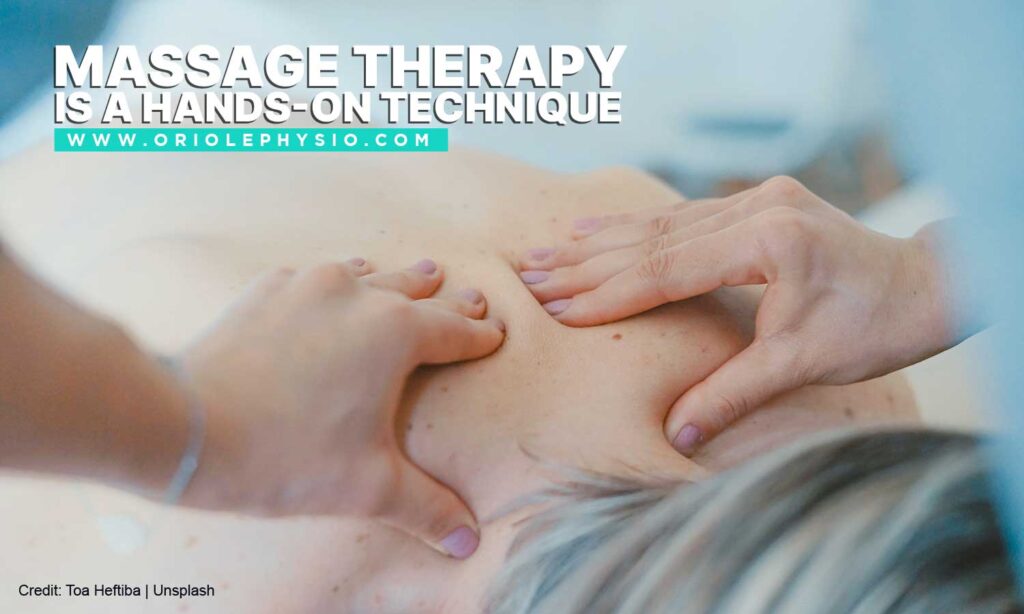
This treatment is defined as the systematic manipulation of the soft tissues of the body. Massage therapy techniques involve applying fixed or variable pressure on muscles and body tissues using the hands and fingers.
How Is Massage Therapy Used?
Massage therapy has a wide variety of uses and benefits for both adults and children. However, its primary purpose is to improve blood flow and reduce muscular tension or flaccidity. Here are some ways on how the therapy is used to benefit the body:
- Used to improve posture
- Helps in reducing emotional or physical stress and anxiety
- Promotes feelings of well-being
- Reduces muscle tension and stiffness
- Helps relieve muscle spasms
- Increases joint and limb flexibility
- Helps in promoting deeper and easier breathing
- Enhances blood circulation and lymph movement
- Relieves tension-related headaches and eyestrain
- Allows soft tissue injuries to heal faster
- Reduces the chances of scar tissue from forming
- Promotes healthy skin
Massage therapy should be done by a licensed massage therapist. Before you book your appointment, make sure you’re doing so with a reputable establishment.
Common Massage Therapy Myths
Rumours and hearsay have a funny way of persuading people of either trying or avoiding something, and the same goes for massage therapy. If you are interested in or have reservations regarding this treatment, it’s an excellent idea to learn more about it and set the right expectations.
Here are the most common myths and their corresponding facts:
1.An Effective Massage Is a Painful Massage
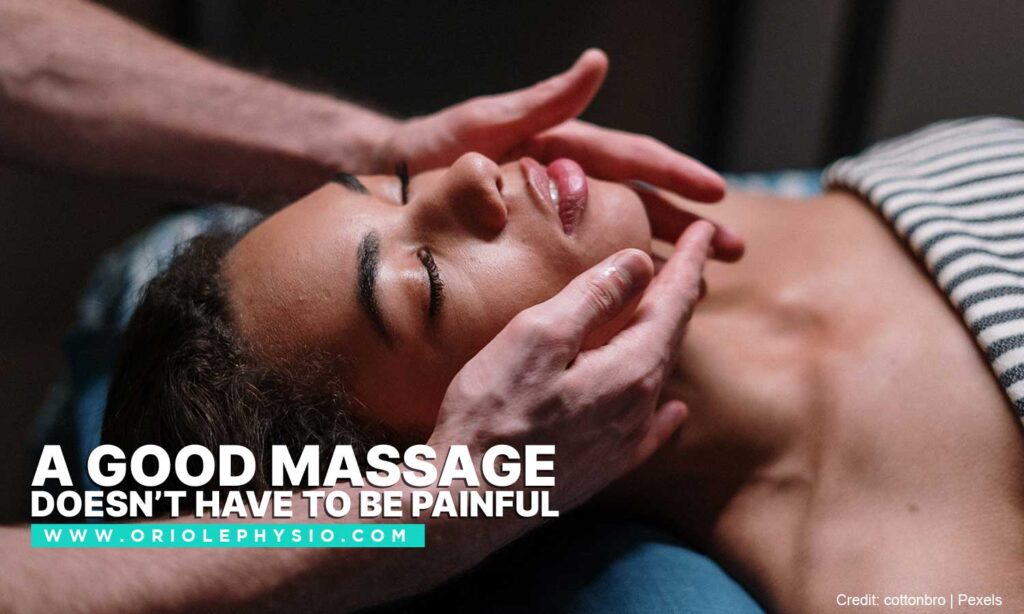
If you’re familiar with the phrase “No pain, no gain”, then you’ll be surprised that some people think this applies to massage therapy as well. In fact, this belief has convinced others to avoid massages altogether because they are afraid of getting hurt.
In reality, massages might cause a little bit of discomfort, but this does not last throughout the entire session. Massage therapists use deep and concentrated pressure that targets knotted areas.
After a surprisingly brief moment of pain or discomfort, you will start to feel the effects of the massage — relief. Since the applied pressure has effectively addressed the problem in the muscles, you will feel a decrease in pressure and pain. Furthermore, before a massage session begins, the therapist will ask the client what kind of pressure he or she prefers.
2.You Can’t Interrupt a Therapist During a Session
A skilled therapist will always make sure that the client feels comfortable during the entire therapy session. You are allowed to interrupt the therapist if the pressure applied is too much.
Therapists would even ask their clients to tell them to increase the pressure or reduce it while in the middle of a massage.
3.The Body Feels Sore a Day After a Good Massage
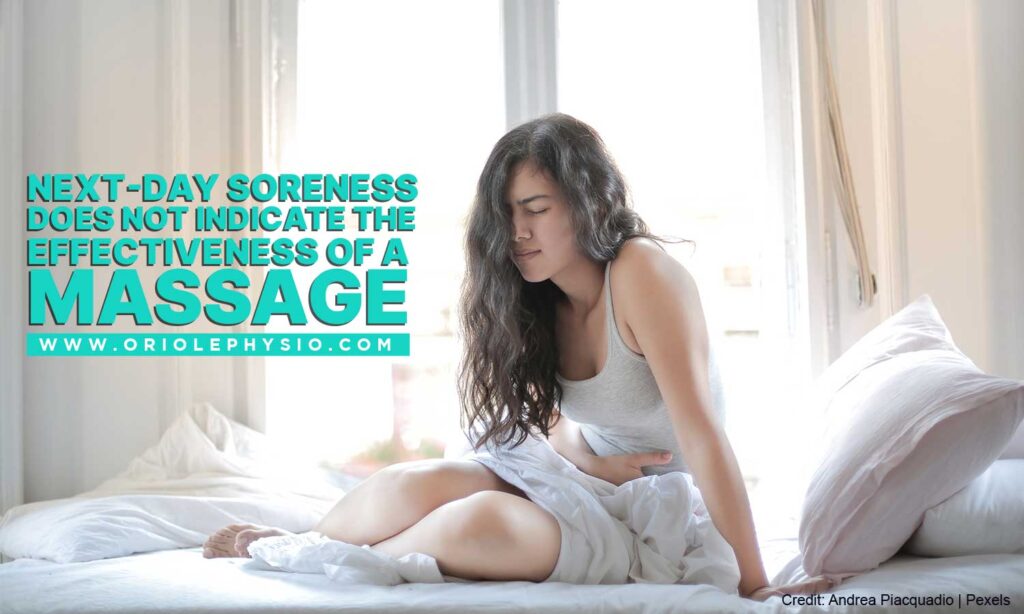
Some expect a hint of discomfort the day after the massage, believing that the lack of pain means that the session was a bust.
This cannot be further from the truth. Soreness depends on the type of massage received and the individual’s own muscle condition. While it’s perfectly normal to feel tender a day after a massage, it is also normal if you don’t. Neither is an indication that the therapy was ineffective.
4.Massage Therapy Only Affects the Muscles
Massage therapy generally involves the muscles, so it’s easy for some people to arrive at this conclusion. However, science has proven that the treatment can do much more for the body than just simple muscle manipulation.
Here are the different ways in which massage therapy can affect certain parts on the body:
- It stimulates lymph nodes and enhances the flow of lymph (the fluid that helps fight infections) throughout the body, consequently reducing inflammation.
- It increases blood circulation, allowing nutrients to be distributed throughout the body, which promotes natural healing.
5.All Massages Are Practically The Same!
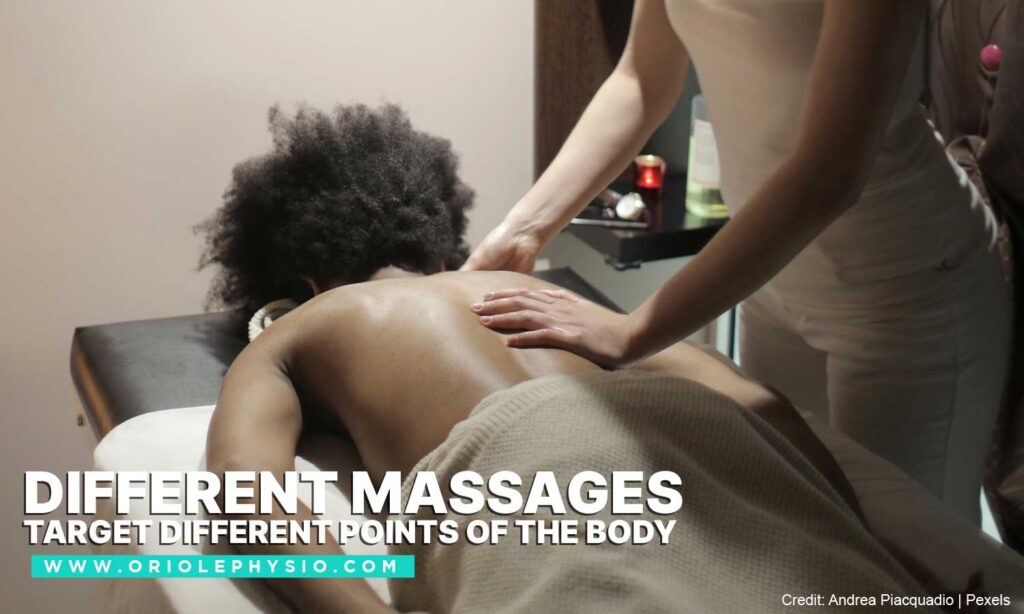
This is a common misconception among skeptics, or those who have never tried a massage before.
The truth: the type of treatment you receive depends on your condition. Different types of massages are designed to address specific muscle conditions and ailments. Here are some examples of the different kinds of massages:
- Sports Massage – This type of massage has been specifically developed for athletes or people who regularly do sports alongside shockwave therapy. It prevents potential injuries, treats injuries sustained during a game, and helps condition the body in preparation for a sporting activity.
- Orthopedic Massage – This massage is designed for rehabilitation. It helps people recover from injuries sustained in an accident.
- Trigger Point Massage – This type of massage focuses on tight muscle fibres that develop from an injury or overuse of the muscles.
6.Massage Therapy Gets Rid of Toxins
This myth leads many to believe that massage therapy is an all-in-one miracle cure. Unfortunately, it is not.
While it promotes overall well-being, there is no scientific evidence that massage therapy releases toxins, or any other type of waste, from the body. The good news is that your body has natural components for the job — your kidneys and your liver.
7.Massages Are Ineffective Against Migraines
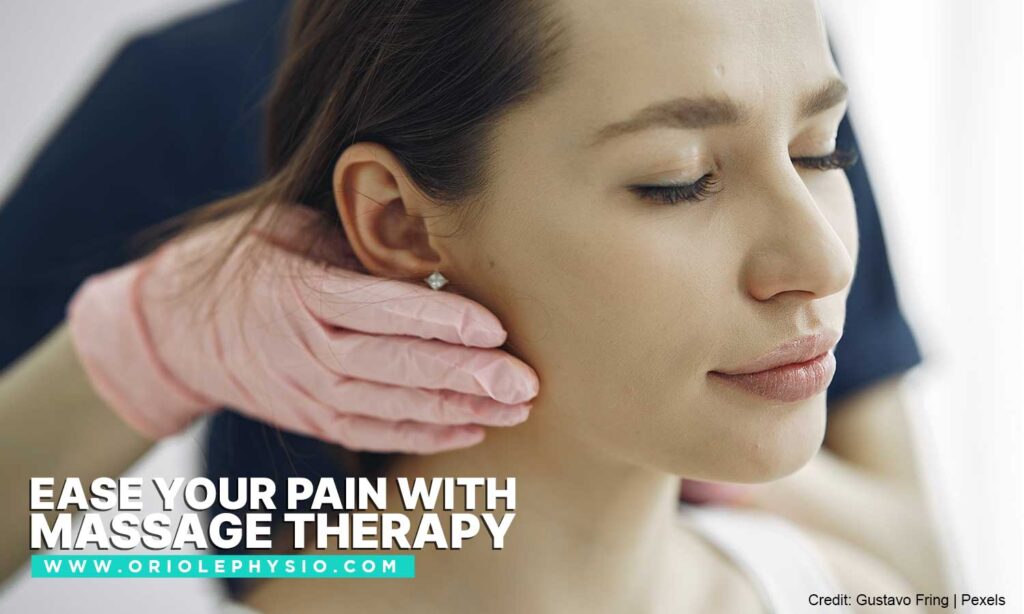
According to a study conducted on migraines and headaches, massage therapy is considered as a complementary treatment. By applying pressure to specific areas called trigger points during a massage session , it will help release muscle tension which will help ease pain signals responsible for migraines or headaches.
These trigger points are located in these areas:
- Neck
- Shoulders
- Head
- Face
Massage therapy can also prevent symptoms that lead to migraines by releasing the tension that disrupts blood flow to the brain.
Migraine symptoms include the following:
- Severe headaches
- Light sensitivity
- Problems with vision
- Nausea
8.Getting a Massage Helps You Lose Fat!
This myth has convinced many with weight issues to get regular massage sessions in the hopes of getting rid of the extra fat in the arms, stomach, buttocks, and thighs. However, getting a massage does not burn fat.
Massage therapy targets muscle fibres, not fatty tissues. If you wish to lose weight, you can start by regulating your eating habits and developing an exercise routine. If you do work out, massage therapy can help you make the most out of it by alleviating muscle pain.
9.The Effects Don’t Last Long
Skeptics would say that the benefits of massage therapy are minimal and don’t last long, especially for pain relief.
The fact is that an expert massage therapist can “train” the muscles to be stronger and more flexible. This reduces the amount of pain and stress it receives in the future. The effects last and can be further prolonged with regular massage sessions. This is the reason why some professional athletes are able to push their muscles way beyond normal levels.
Before you decide to try or not to try massage therapy, do your due diligence. Take careful consideration of any information that people tell you, especially if they haven’t experienced it themselves. Consult with a professional if you want verifiable information backed by studies. Do what’s best for your body and make an informed decision based on facts, not myths.
If you are in need of professional massage therapy services or have any inquiries, call Oriole Physiotherapy & Rehabilitation Centre at (416) 221-0772. Our therapists are happy to walk you through any procedure and develop a treatment plan for your specific needs.

